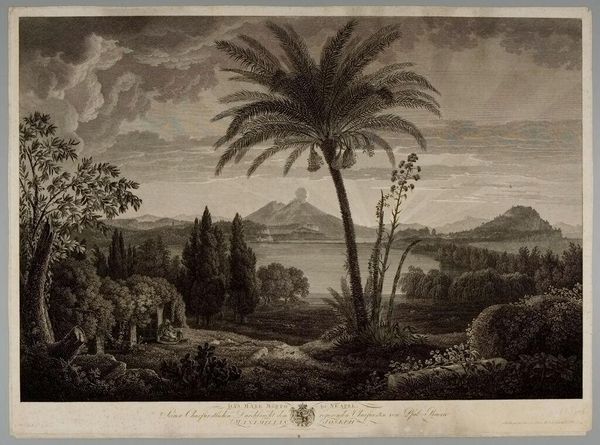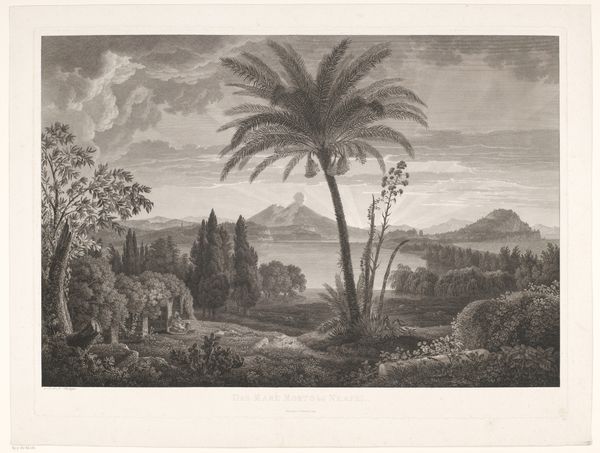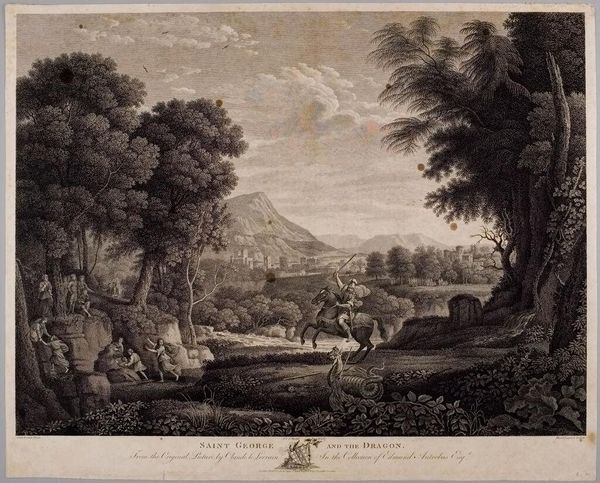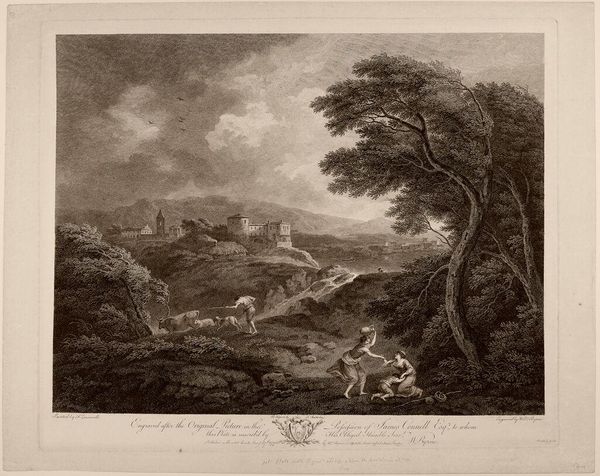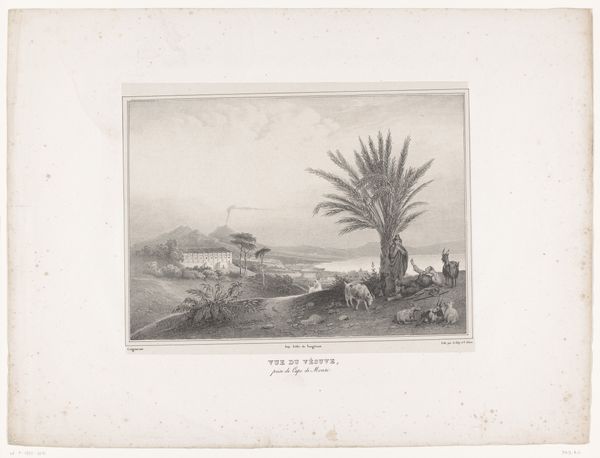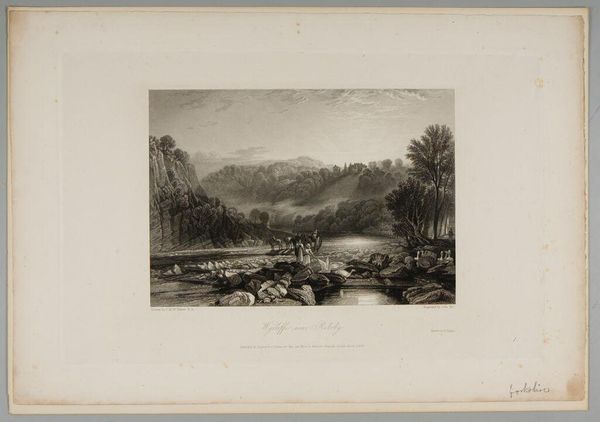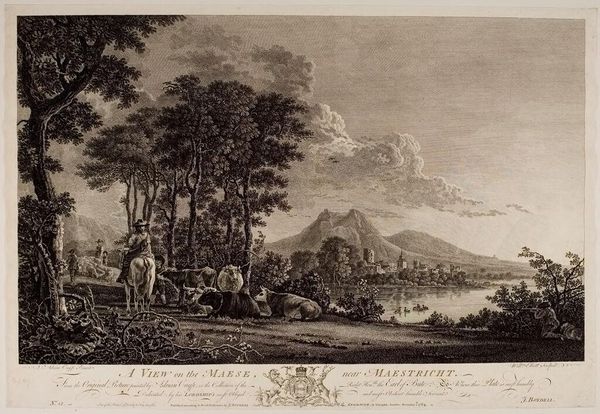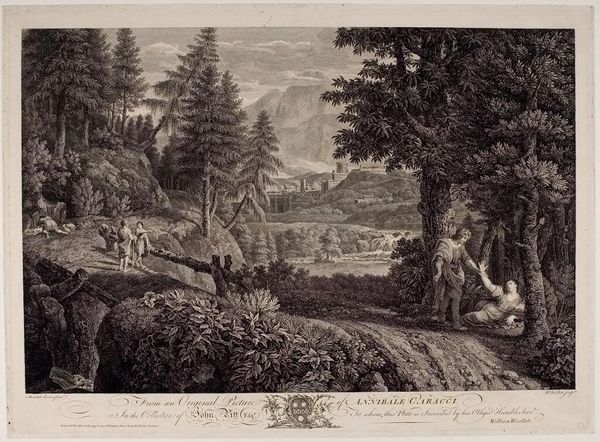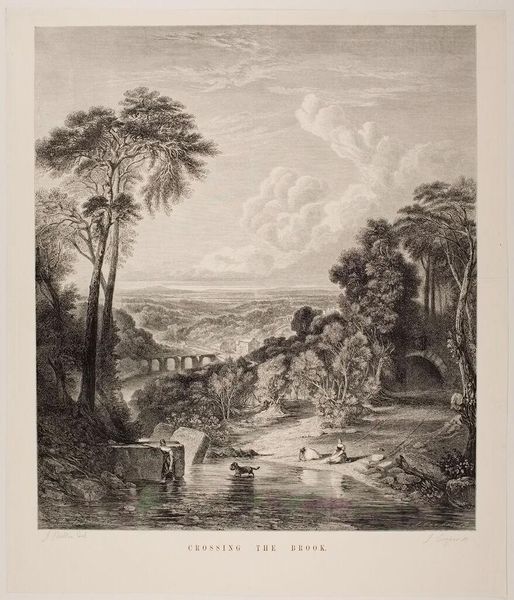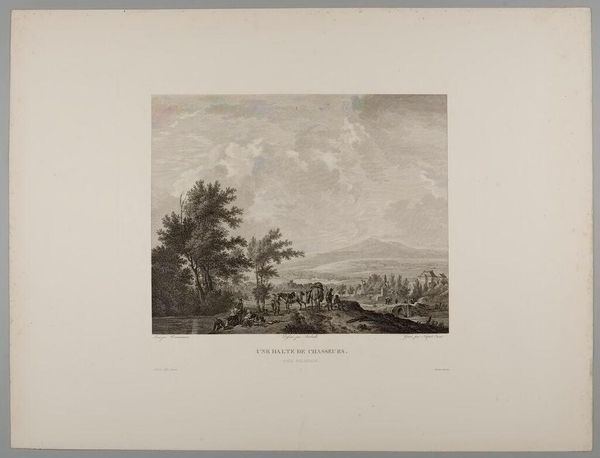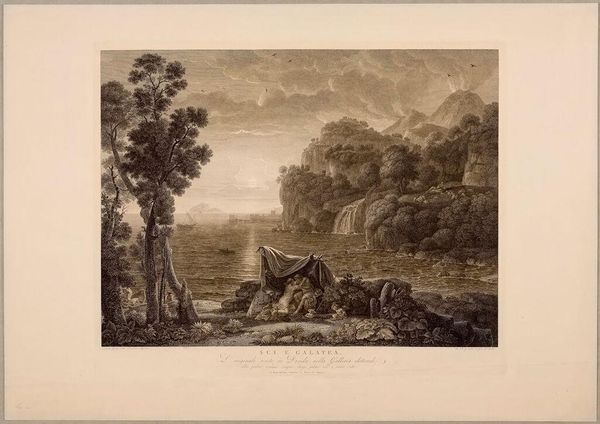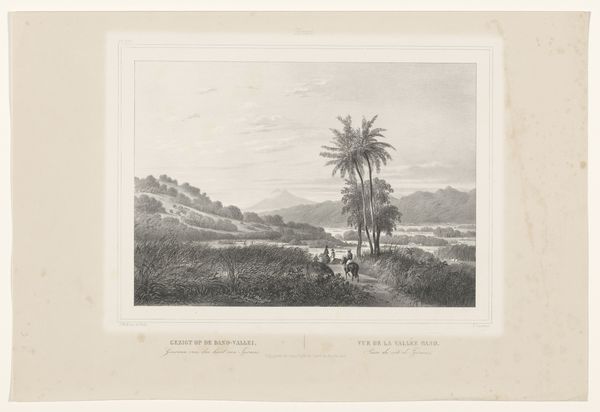
Copyright: CC0 1.0
Curator: Friedrich Wilhelm Gmelin’s "The Dead Sea near Naples" presents a vision of the Italian landscape. What strikes you immediately about this print? Editor: The stark contrast and dramatic lighting give it an almost apocalyptic feel, despite the serene subject matter. It's unsettling. Curator: Gmelin, working in the late 18th and early 19th centuries, was deeply embedded in the Grand Tour culture. Prints like this served to disseminate idealized views of Italy for a European audience. Editor: Idealized, yes, but also deeply colonial. "The Dead Sea near Naples," framing it this way sanitizes the impact of imperial exploitation and natural disasters on the land and its people. Curator: True, the image's tranquility might obscure the complex socio-political realities of the time. Consider how Gmelin uses classical motifs to create a timeless, and arguably misleading, image. Editor: It's a reminder that even landscape art is never neutral. Whose gaze is being centered, and at what cost? It prompts us to interrogate the power dynamics inherent in landscape representation.
Comments
No comments
Be the first to comment and join the conversation on the ultimate creative platform.
